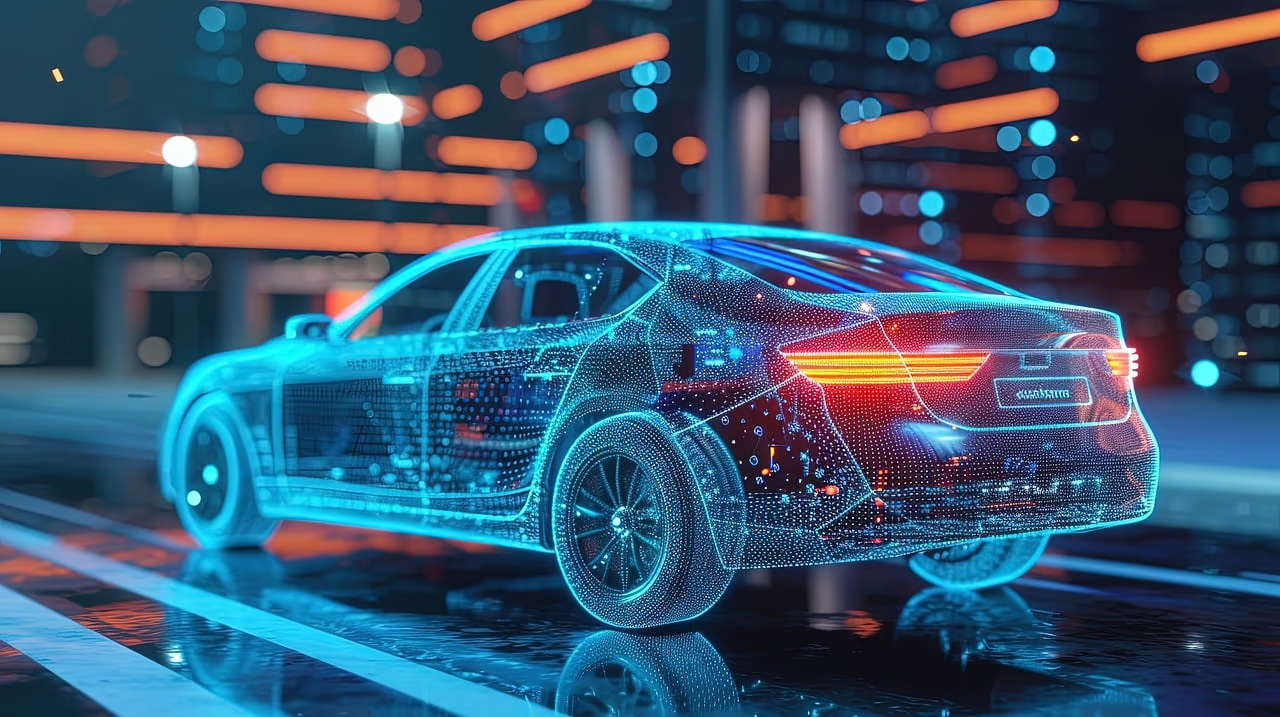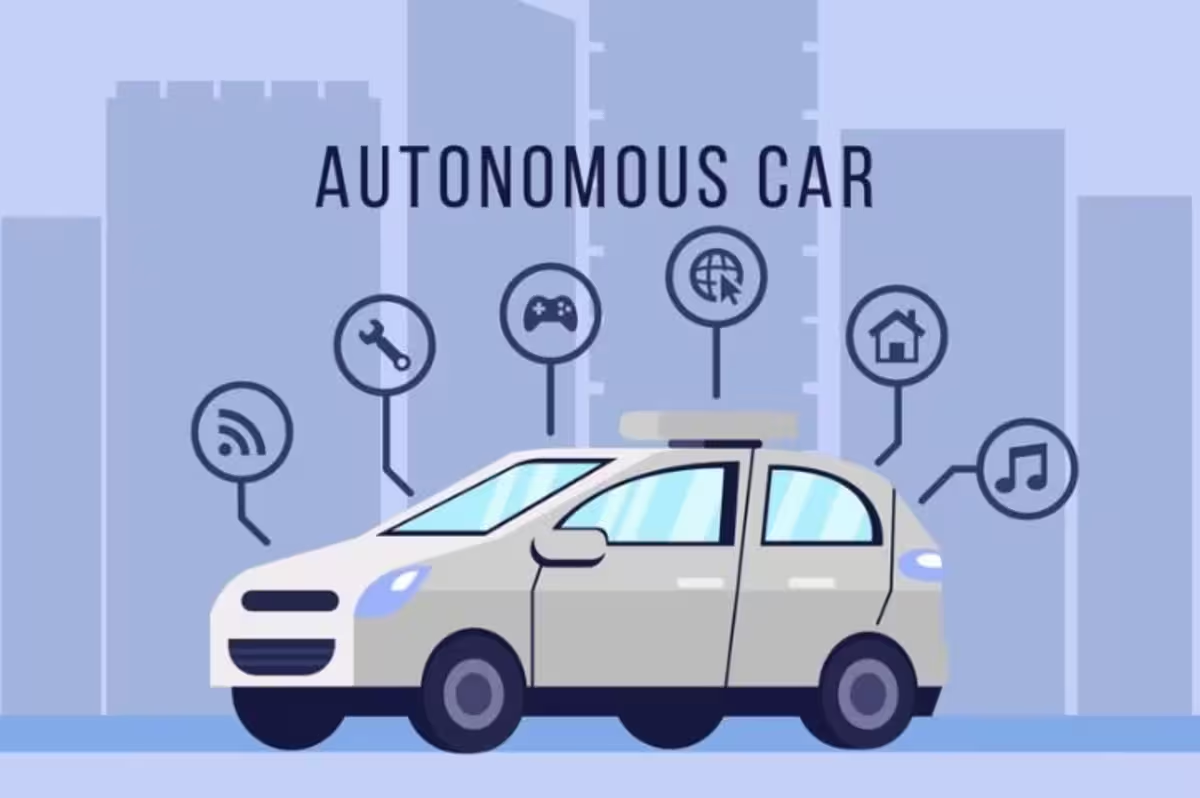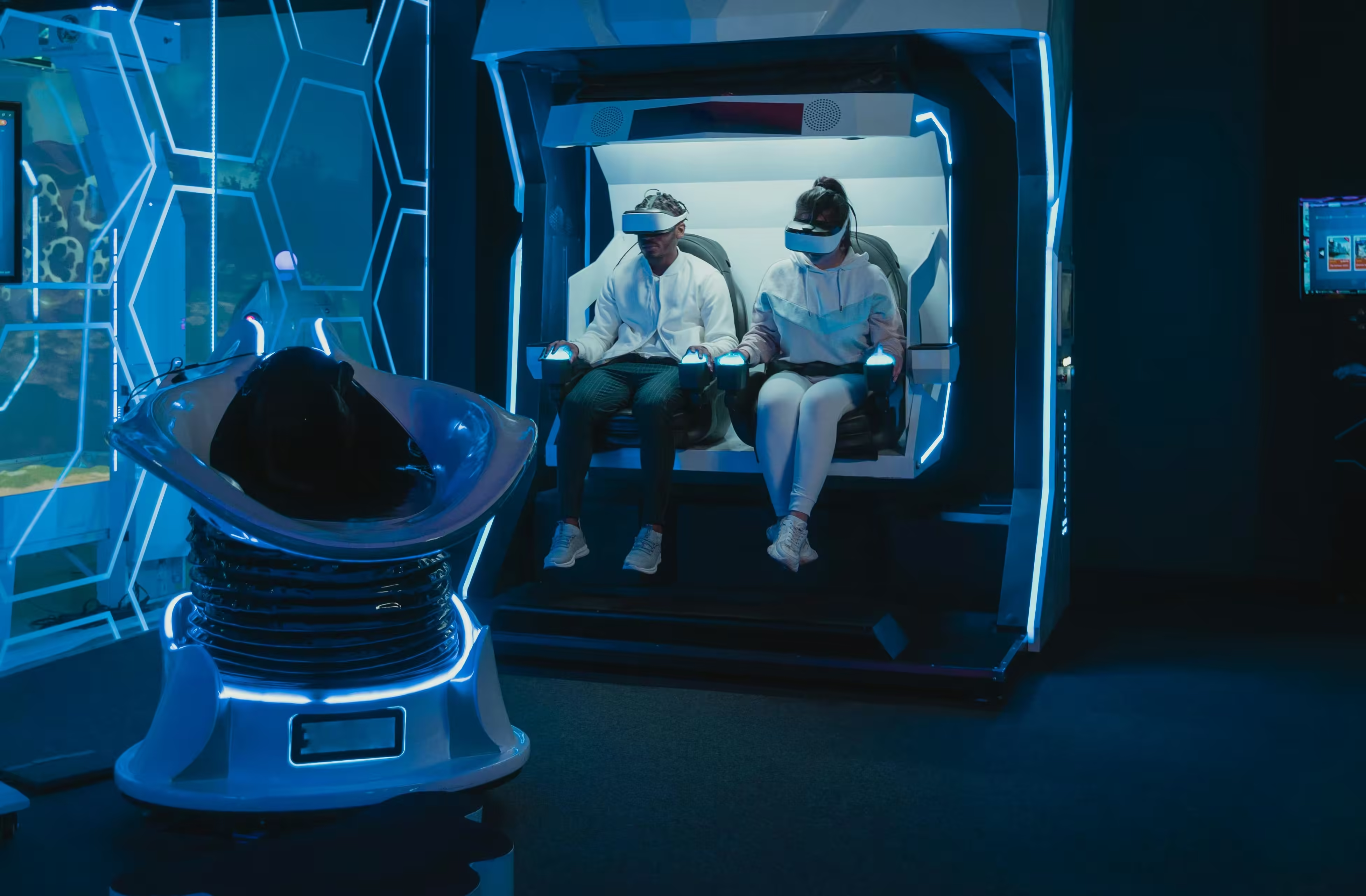Role of AI in Autonomous Driving: Deep Learning and Computer Brains
Introduction
One of the most exhilarating advancements in the automotive world is the rapid rise of AI in autonomous vehicles. These smart cars are not just a thing of the future—they're here, and they're transforming how we think about travel. From deep learning algorithms to computer vision systems, artificial intelligence is playing a pivotal role in revolutionizing autonomous driving. Let’s explore how AI is making our roads safer, enhancing machine learning in autonomous driving, and changing the way we commute, setting the stage for the future of AI-powered self-driving cars.
AI is the brain behind autonomous vehicles. It's what allows these cars to perceive their environment, make decisions, and navigate safely. AI algorithms process data from various sensors, including cameras, radars, and LiDAR, to understand the vehicle's surroundings. This real-time data processing is crucial for tasks like lane-keeping, obstacle detection, and path planning.
Key Technologies Driving AI in Autonomous Vehicles
Computer Vision: Computer vision enables autonomous vehicles to interpret visual data from cameras. By recognizing objects like pedestrians, other vehicles, and traffic signals, computer vision helps the car make informed decisions. For example, computer vision algorithms can detect a pedestrian crossing the road and alert the vehicle to stop.
Machine Learning and Neural Networks: Machine learning is at the heart of AI in autonomous vehicles. Neural networks, a subset of machine learning, allow the car to learn from vast amounts of data. These networks improve the vehicle's decision-making over time by recognizing patterns and making predictions. For instance, a neural network can help the vehicle predict the behavior of other drivers on the road.
Sensor Fusion: Sensor fusion involves integrating data from multiple sensors to create a comprehensive understanding of the environment. By combining inputs from cameras, LiDAR, radar, and ultrasonic sensors, the vehicle can more accurately detect and respond to obstacles, improving safety and reliability.
Use Case 1: Driver Assistance - Adaptive Cruise Control
Type of AI Used: Adaptive Cruise Control (ACC) utilizes machine learning algorithms and sensor fusion techniques to maintain a safe distance from the vehicle ahead. The AI system processes data from various sensors to adjust the car's speed dynamically.
Required Hardware: The hardware required includes radar sensors, cameras, ultrasonic sensors, and a central processing unit (CPU) with AI capabilities. Radar sensors measure the distance and relative speed of vehicles in front, while cameras capture visual data to identify lane markings and other objects. Ultrasonic sensors assist in close-range detection.
How It Is Used and Installed: ACC systems are typically installed during the manufacturing process of the vehicle, integrated into the car's existing electronic control units (ECUs). The sensors are strategically placed around the vehicle: radars in the front grille, cameras near the rearview mirror, and ultrasonic sensors in the bumpers. The AI algorithms constantly analyze the sensor data to adjust the vehicle's speed, ensuring it maintains a safe following distance. Installation as an aftermarket feature is complex and often not feasible due to the need for deep integration with the vehicle's systems.
Further Details: When ACC is active, the driver sets a desired speed. The AI system then monitors the traffic ahead and automatically adjusts the car's speed to maintain a pre-set distance from the vehicle in front. If the road clears, the system accelerates back to the desired speed. This reduces driver fatigue on long trips and enhances safety by preventing tailgating and sudden braking.
Use Case 2: Vehicle Safety - Automatic Emergency Braking
Type of AI Used: Automatic Emergency Braking (AEB) uses computer vision and deep learning algorithms to detect potential collisions. The AI system processes real-time data from cameras and LiDAR sensors to identify obstacles and determine the risk of collision.
Required Hardware: The hardware setup includes forward-facing cameras, LiDAR sensors, radar sensors, and an advanced AI processing unit. Cameras provide high-resolution images for object recognition, while LiDAR sensors offer precise distance measurements. Radar sensors complement these by detecting objects in various weather conditions.
How It Is Used and Installed: AEB systems are installed both during manufacturing and as aftermarket kits. The sensors are mounted at the front of the vehicle, with cameras typically placed near the windshield and LiDAR sensors integrated into the grille or bumper. The AI processing unit is connected to the vehicle's braking system. The system continuously scans the road ahead, and if it detects an imminent collision, it warns the driver. If the driver does not respond in time, the AI system automatically applies the brakes to prevent or mitigate the collision.
Further Details: AEB significantly enhances vehicle safety by reducing the severity of collisions or avoiding them altogether. The AI algorithms are trained on extensive datasets of various driving scenarios, enabling them to recognize and react to potential hazards accurately. In emergency situations, the AI system can react faster than a human driver, applying the brakes within milliseconds of detecting a threat. This technology is particularly beneficial in urban environments with high pedestrian activity and unpredictable traffic conditions.
Real-World Example: Pseudocode for Pedestrian Detection
To give you a real-world idea of how these systems work, here's a very overly simplified and just illustrative example of pseudocode that might be used in an ADAS (Advanced Driver Assistance System) radar to check for pedestrians crossing the road. This code would be part of a larger system that ensures the safety of both the passengers and pedestrians.
function detect_pedestrians(sensor_data): for each frame in sensor_data: pedestrians = [] objects = frame.get_objects() for object in objects: if object.type == 'pedestrian' and object.distance < SAFE_DISTANCE: pedestrians.append(object) if pedestrians: vehicle.apply_brakes() alert_driver("Pedestrian crossing detected") else: vehicle.resume_normal_speed() update_vehicle_status()
The purpose of this example is just to give you a feel, that AI is nothing more than lines of code and logic, written for the most part by humans in source code. The efficacy and implementation, however, can vary a lot between manufacturers. Without wanting to go into too many specifics, but the way the code is written, compatability and configuration with existing hardware, flexibility, and most of all: amounts of data available to use as training sets for any AI models. In this overly simplified illsutrative example, the function detect_pedestrians processes data from the vehicle's sensors frame by frame. It checks for objects classified as pedestrians and if any are within a predefined safe distance, the vehicle's brakes are applied, and the driver is alerted.
Benefits of AI in Autonomous Driving
Real-Time Navigation and Decision-Making: One of the key benefits of AI for autonomous vehicles is the ability to process and exchange data in real-time. This allows for more accurate and timely navigation and decision-making. Autonomous vehicles can quickly adapt to changing road conditions, avoid obstacles, and optimize routes based on real-time traffic data.
Enhanced Safety: Safety is paramount in autonomous driving, and AI plays a significant role in enhancing it. The low latency of AI-driven systems allows for faster response times, enabling vehicles to react to potential hazards more quickly. Additionally, the increased connectivity allows for better coordination between vehicles, reducing the risk of accidents and improving overall road safety.
Improved Efficiency: The high-speed data transfer capabilities of AI enable autonomous vehicles to operate more efficiently. By accessing real-time traffic data, vehicles can optimize their routes to avoid congestion and reduce travel times. This not only benefits individual drivers but also contributes to a more efficient transportation system as a whole.

Current Developments and Pilot Projects
Several companies and research institutions are actively exploring the integration of AI technology with autonomous vehicles. Here are a few notable examples:
Waymo: Everyone who is interested in or works in automotive or AI has heard of Waymo. Waymo, a subsidiary of Alphabet Inc., is one of the leaders in autonomous vehicle technology. The company has been testing its autonomous vehicles with AI-driven connectivity to improve data exchange and decision-making processes. These tests have shown promising results in terms of safety and efficiency.
Tesla: Tesla is also leveraging AI technology to enhance its Full Self-Driving (FSD) capabilities. The increased data transfer rates and low latency of AI networks allow Tesla's vehicles to receive and process updates and real-time data more quickly, improving their autonomous driving performance.
General Motors and Cruise: Although there are many other examples (such as Nio, read about it here), I'll choose my third one to be a lesser known one in the AI space. General Motors and its autonomous driving subsidiary, Cruise, are working on integrating AI technology into their autonomous vehicle platforms. This integration aims to enhance the vehicles' ability to communicate with each other and with infrastructure, improving overall safety and efficiency.
Potential Challenges and Solutions
Infrastructure Development: AI requires infrastructure, training sets, training scenarios, beta tests and lots and lots and lots of data (that's where Tesla has a headstart over others, but more on that in another article). The deployment of AI infrastructure is a significant undertaking that requires substantial investment and coordination between various stakeholders. Ensuring widespread coverage and reliability is crucial for the success of AI-enabled autonomous vehicles.
Data Security and Privacy: With increased connectivity comes the need for robust data security and privacy measures. Autonomous vehicles generate and exchange vast amounts of data, making them potential targets for cyberattacks. Implementing strong cybersecurity protocols is essential to protect both vehicles and users.
Regulatory and Ethical Considerations: The widespread adoption of autonomous vehicles with AI connectivity raises several regulatory and ethical questions. Governments and regulatory bodies must develop frameworks to address issues such as liability, data privacy, and the ethical implications of autonomous decision-making.
Future Outlook
As AI technology continues to advance, the capabilities of autonomous vehicles will only improve. Future developments may include even more sophisticated sensor systems, advanced predictive algorithms, and enhanced vehicle-to-vehicle (V2V) and vehicle-to-infrastructure (V2I) communication. These innovations will further enhance the safety, efficiency, and convenience of autonomous driving.
Furthermore, the integration of AI with other emerging technologies such as 5G and edge computing will play a critical role in realizing the full potential of autonomous vehicles. These technologies will enable faster data processing, lower latency, and more reliable communication, paving the way for a new era of smart transportation.
EV-Global Team Verdict
AI and (forms of) machine learning have been part of the automotive industry for quite some time, often integrated into functional aspects like security and driver assistance features. However, AI is now transitioning to become a central component in vehicles, driving the evolution of autonomous electric vehicles. The rollout of AI technology is set to transform the landscape of autonomous driving with innovations such as sensor fusion, AI-powered driver assistance, and Tesla's Full Self-Driving AI. As the necessary infrastructure develops and technology advances, we can expect a new era of transportation that is smarter, more connected, and more sustainable. The future of AI in autonomous vehicles, fueled by over-the-air updates and advancements in machine learning, is not just a possibility; it's an exciting reality on the horizon.



